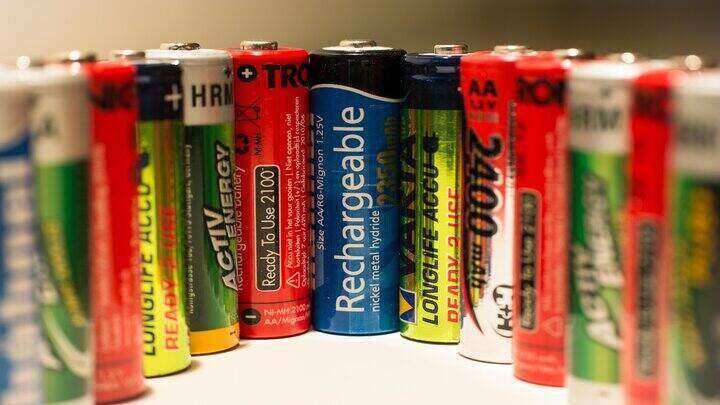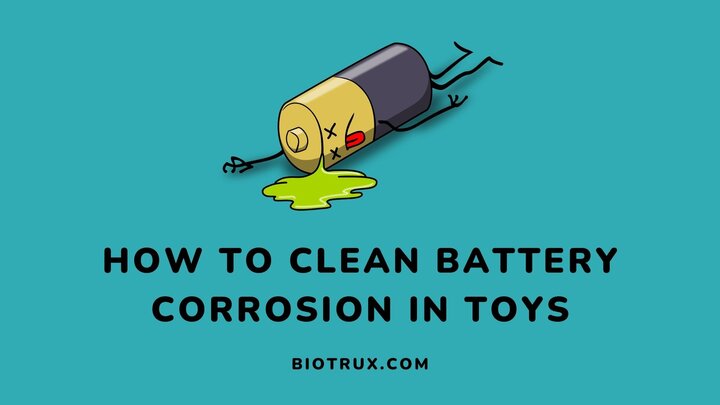Toys and most electrical devices come with spaces for replaceable batteries. When these spaces get exposed to moisture or excess heat, batteries tend to corrode and extend this corrosion to their spaces. You don’t have to discard such toys or batteries if you know how to clean battery corrosion.
This process should also take only a few minutes because there is a high chance you already have everything you need to complete the procedure at home.
The essence of this guide is to guide you to what you need for the procedure and how to do it. You should also note that this procedure only works for cleaning corrosion from toys or electrical devices with battery slots.
What You Need to Remove Battery Corrosion
Before diving into the procedure proper, here are a couple of items you need to execute the procedure successfully:
- A pair of protective gloves for protection against skin burns
- Protective goggles to protect the eye
- Cotton swabs
- Isopropyl alcohol
- White vinegar or lemon juice
- A disposable container
- A microfiber cloth or pencil eraser
How to Clean Battery Corrosion in Toys

Aside from using protective gloves and skin, it would help if you also considered executing this procedure with long-sleeved clothing. With all precautions taken, here are the three most important steps to cleaning battery corrosion in toys:
1. Breakdown the rust with an acid (white vinegar or lemon juice)
Battery corrosion is usually an after-effect of leakages or exposure to moisture. For most single-use (alkaline-based) or rechargeable (nickel-based) batteries, you can use white vinegar or lemon juice to neutralize or soften the hardened corrosion traces.
The best way to apply any of these acids is to use a cotton swab. These acids have the power to disintegrate the whitish discharge caused by leakage.
This does not apply to car batteries because they mostly feature lead-acid batteries.
2. Introduce isopropyl alcohol
Now that vinegar or lemon juice has softened the corrosion, you need to clean the area with isopropyl alcohol, an effective electronic cleaning agent.
It removes any acid remnants stuck in the battery compartment without leaving any moisture. However, to get the best result, you should opt for the purest form (about 90 to 99%) of isopropyl alcohol.
Those with first-aid kits generally contain 70% alcohol and may not do a thorough job.
3. Wipe (or blow) it dry
After cleaning with isopropyl alcohol, wipe the corroded portion of the toy with a microfiber cloth. You can also do a little bit of polishing with a pencil eraser.
Expose the battery space to compressed gas to remove stubborn fibers left behind by the cotton swabs. Allow it to dry completely before inserting new batteries and switching on the toy.
Tips For Preventing Battery Acid Leakage
One way to avoid corrosion in batteries is to prevent leakages. You can do this by:
- Practicing proper battery installation
- Removing batteries if your children’s toys won’t be active for long. In this case, these batteries should be the first up for donation.
- Avoiding mixing old and new batteries in the same toy.
- Not storing toy batteries in the freezer or refrigerator. Storing in a cool and dry environment instead.
FAQs
Will Coke clean battery terminals?
Coke is slightly acidic and can clean and remove corrosion from car battery terminals. However, it cannot be used for toys or alkaline batteries.
Does boiling water remove corrosion?
Boiling water will not remove corrosion. This is because rust particles are not living organisms that can be killed with increased temperature.
Does bleach remove corrosion?
Using bleach is not an effective way of removing corrosion. Instead, opt for rust-removing products from the nearest hardware store.
Conclusion
Discarding toys with corrosion or a corroded battery can harm the environment. Instead, depending on the battery’s condition, you can clean the corrosion and reuse or replace it.
While cleaning, you should also check the other portion of the toy for traces of corrosion. An alternative way of disposal is to recycle them. Since most toys also feature 2A, 3A, C, D, and 9V rechargeable batteries, they can be easily recycled.
I hope you found this guide helpful. Would you like to know how different this procedure is from cleaning corrosion in car batteries; see my guide on if corroded terminals drain car batteries.
Thanks for reading.

